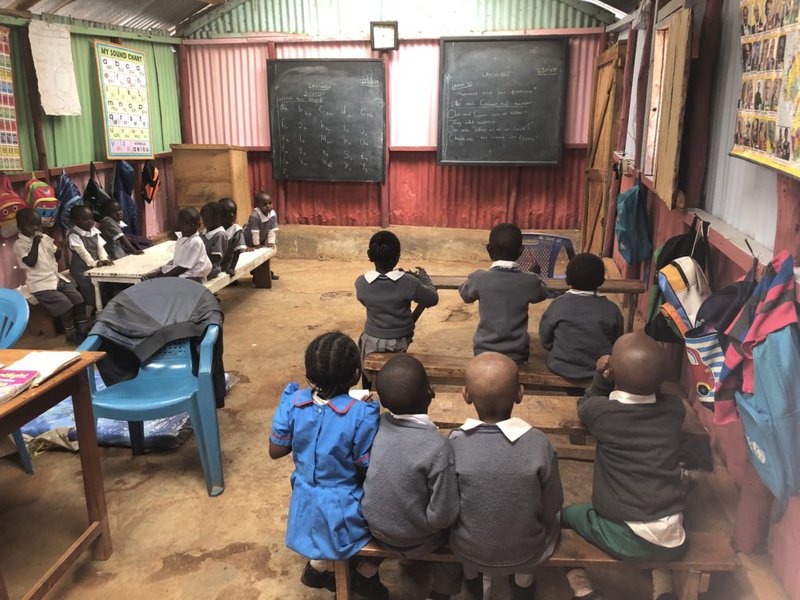Advocating for the Right to Education: A Conversation with Hakijamii Kenya
Nov. 4, 2019In a conversation with Zulekha Amin, the Education and Litigation Officer at Hakijamii, Canadian youth education advocate Tayler Hernandez discusses some of the realities of the education context in Kenya.

Photo credit: Hakijamii
By Tayler Hernandez
This blog was originally posted on the RESULTS Canada blog here.
Put simply, education is a human right. On the global level, there have been significant strides within the education sector; for example last year’s historic G7 commitment for education for girls, adolescent girls and women in developing countries in the Charlevoix Declaration. Yet, in many countries of the world, the right to education is still not being realized by all.
As a member of the Canadian International Education Policy Working Group’s Youth Advisory Council (CIEPWG YAC), I recently participated in a two-day workshop on international education. The workshop was followed by a day on Parliament Hill where I spoke to Canadian Members of Parliament and policy advisors about the importance of international education.
In addition to the Canadian advocacy work around global education, there are also great advocacy efforts happening in countries overseas to address education issues on the ground. One example is Hakijamii: a national human rights organization in Kenya that aims to support marginalized groups in realizing their economic and social rights – including education. In a conversation with Zulekha Amin, the Education and Litigation Officer at Hakijamii, I discussed some of the realities of the education context in Kenya. Zulekha sees education as a personal issue that is very “close to [her] heart”, describing herself as “fortunate” to have received an education, having come from a community where many girls do not. In this blog, I will be highlighting the key points from my conversation with Zulekha.
Quality Education Matters!
One of the biggest differences in education-related goals between the Millennium Development Goals (MDGs) and the Sustainable Development Goals (SDGs) is that SDG 4 emphasizes the importance of quality education that is inclusive and equitable[1]. This means that improving education is about more than just increasing the number of schools. In many marginalized communities, the accessibility and availability of quality education is an issue. Zulekha explained how in informal settlements like slums in Nairobi there might not be a public school nearby for students to attend, or if there is, it is difficult to get to. In response to this, schools outside of the formal education framework referred to as Alternative Provision of Basic Education and Training (APBET) schools have been established to provide children and youth with a basic education. However, these APBET schools lack funding and resources, so Hakijamii does advocacy work to improve the quality of learning that is offered.
The quality of the facilities within schools is also important. In Kenya, the lack of quality sanitation facilities is a major issue. Zulekha described how often times there are not enough toilets in schools and as a result said that “children spend their entire lunch break waiting in line for the toilet and then have to go back to class before they get the chance to use it.” This issue of toilet accessibility also has unequal gendered impacts. While menstruating, girls usually do not attend school at all because they know there will not be a toilet for them to use.
Education and Gender
The relationship between education and gender disparity does not stop at facility accessibility. Out of the 263 million children and youth that currently are out of school, girls remain to be twice as likely to be excluded from education compared to boys.[2] According to Zulekha, one major education issue in Kenya is discrimination, specifically towards adolescent girls. This is due to the fact that when adolescent girls become pregnant, they get pulled from their schools and/or are denied re-entry into their schools after giving birth. While the right to education is protected under the law in Kenya, many girls are unaware of their rights. Zulekha’s work with Hakijamii focuses on educating girls on their right to education and advocating to lawmakers for better guidelines and implementation of education rights.
The Role of Community Engagement
Education is a right for all individuals; however, recognizing this right involves engaging the entire community. This aspect of the community is clear in Hakijamii’s work. After all, Hakijamii is Swahili for justice for the community. That’s why Zulekha’s work to increase awareness of the right to education is not limited to educating girls on their rights, but also includes educating parents, community members and school principals. Additionally, Hakijamii uses radio broadcasts to spread the message of the right to education within the community.
From my conversation with Zulekha, I was able to learn a lot about the education context in Kenya such as the need for quality and inclusive education; the relationship between gender and the right to education; and the importance of community engagement. Understanding these key issues can lead to more informed and more effective advocacy efforts on international education.
By becoming more aware of the issues within the education sector and working together as a global community to address these issues, we can best ensure that the right to education is being realized by everyone, everywhere!
